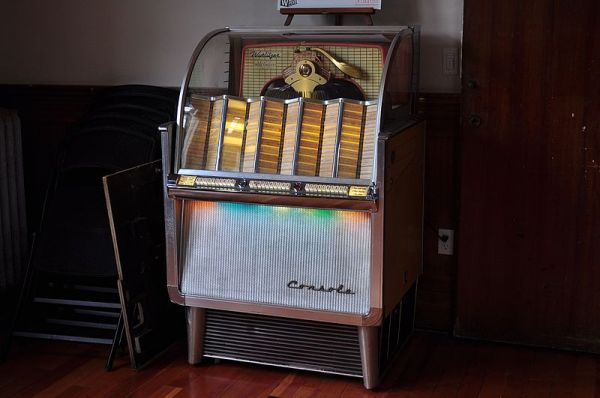
When
Thomas Edison showed off his phonograph in 1877, no one could imagine
how important sound recording would become. That would only happen with
the improvement of recording media quality so that music could be
shared. Coin-operated vending machines were already around, and an
enterprising inventor named Louis Glass married the two concepts
together with his 1889 device that later became known as the juke box.
Glass's
machine looks nothing like what we've come to know as a jukebox. The
phonograph was encased in a lead-lined oak cabinet and had a 25-lb.
sulfuric acid battery that provided electricity through wires to the
motor. It could only play one wax cylinder at a time and had to be
changed manually, meaning the music options—which probably included 1889
hits like "Down Went McGinty" and "The Rip Van Winkle Polka"—were quite
limited. One clever tidbit: As part of the deal with the saloons, he
had added an announcement at the end of each cylinder that told patrons
"to go over to the bar and get a drink."
Amplification was poor,
hence the four listening tubes. "It was a nickel for each tube, so you
wouldn't want to join when (the song) was half-way through," Koenigsberg
says, "Also, (the tubes) went into people's ears, so there was the
not-quite-aesthetic pleasantry of handkerchiefs hanging on the side of
the machine to wipe off the tubes." Nonetheless, the machine was a San
Francisco sensation. A few weeks later, Glass placed a second machine in
the same saloon. On December 18, 1889, he filed his application for the
patent and quickly went to work making more.
That set off a race to make a better jukebox, with Glass competing to keep his innovation on top. Read
the history of those delightful machines that fed the pop music industry for a hundred years at Popular Mechanics
 When
Thomas Edison showed off his phonograph in 1877, no one could imagine
how important sound recording would become. That would only happen with
the improvement of recording media quality so that music could be
shared. Coin-operated vending machines were already around, and an
enterprising inventor named Louis Glass married the two concepts
together with his 1889 device that later became known as the juke box.
When
Thomas Edison showed off his phonograph in 1877, no one could imagine
how important sound recording would become. That would only happen with
the improvement of recording media quality so that music could be
shared. Coin-operated vending machines were already around, and an
enterprising inventor named Louis Glass married the two concepts
together with his 1889 device that later became known as the juke box.
No comments:
Post a Comment